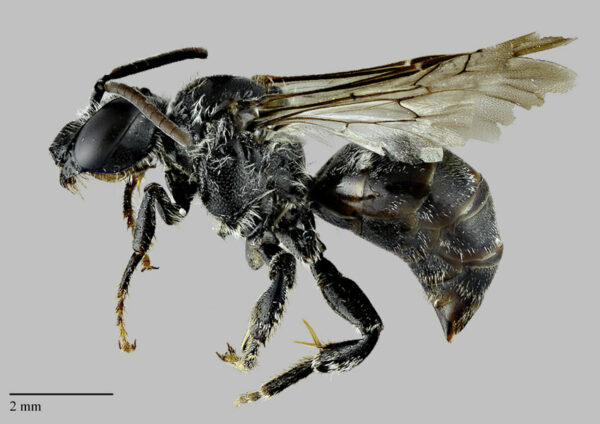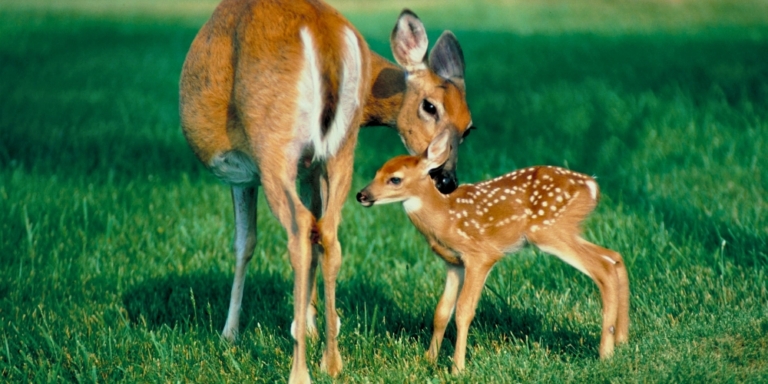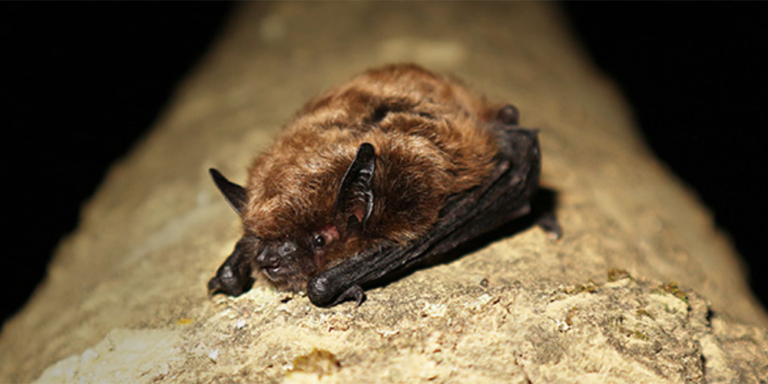What do the yellow-banded bumble bee, western bumble bee, Suckley cuckoo bumble bee, and yellow bumble bee all have in common?
They are all part of the same bee family called Bombus, which can be found here in Alberta.

But there’s bad news – these four bumble bee species struggle to survive and are listed as threatened.
Native bees are having a hard time worldwide, and Alberta bees are also suffering.
The widespread use of bee-killing pesticides, parasite infections, and diseases have contributed to declining bee numbers.
The changing climate and loss of natural habitat also make it harder for native bees to find appropriate places to live.
But not all of our province’s native bees are in trouble.
Some are doing okay, and some have even seen their populations drastically increase.
One big problem is that bees we use for farming, like domesticated bumble bees, can spread diseases to their wild bee neighbours.
Greenhouse Bees Not So Green?
Megan Evans, who leads the Alberta Native Bee Council, thinks diseases from domesticated bumble bees used to pollinate plants in greenhouses and farms might be making wild bumble bees sick.
“For years, we used the western bumble bee as a greenhouse pollinator…we think that there’s a pathogen spillover effect that has more greatly impacted [wild] bumble bees,” Evans told Western Wheel.
Bumble bees use a unique “buzz pollination” technique to collect pollen from flowers. By rapidly vibrating their muscles, they cause pollen to shake free, especially from plants such as tomatoes, peppers and blueberries, which release pollen through tiny openings.
Unlike bumble bees, honey bees do not use buzz pollination.


So, greenhouses use bumble bees to pollinate crops. Honey bees are used, as their name suggests, to make honey.
Unfortunately, diseases develop rapidly in the confined spaces of greenhouses, making the domesticated bumble bees sick, and these diseases can spread to nearby wild bees.
Greenhouse bees can spread diseases to wild bees because they often travel and forage in the same areas as the wild bees.
Two types of wild bees show the direct impact of disease spillover in Alberta: the Suckley cuckoo and the Macropis cuckoo.
Macropis cuckoo lay their eggs in other bees’ nests.
These cuckoo bees prefer to use western and yellow-banded bumble bees’ nests, the most popular bee species for greenhouses.
Because of disease spillover, the Macropis cuckoo population has declined significantly.
Only four individuals have been collected in Canada in the last 50 years.
The Suckley cuckoo is meeting the same fate.
Bee The Change You Want To See!
“This has to do with like a pathogen that came through domesticated bumble bees, which I think is a very important cautionary tale to tell to the public,” said Evans.
Greenhouses are starting to use bees from other places, which could introduce more invasive species to our province.


But hope is not lost!
Some experts, like Sheila Colla and Rachel Nalepa from York University, have a plan to help bees.
They want to reduce diseases in managed bee populations and stop diseases from spreading to wild bees.
To do this, Colla and Nalepa say we should regulate all bumble bees used for farming, just like we do with honey bees.
Honey bees form extensive colonies, with populations reaching up to 60,000 individuals, organized into a sophisticated social hierarchy that includes a single queen, numerous workers, and drones.
In contrast, bumble bee colonies are much smaller, typically comprising 50 to 500 members, and exhibit a less structured social organization. This social structure makes them more suited as greenhouse pollinators.
Evans thinks it’s a simple solution to prevent the spread of bumble bee diseases.
We just need greenhouses to follow rules to keep bees inside and stop diseases from spreading.
Tighter Rules?
But right now, the Canadian Food Inspection Agency is only concerned about controlling disease spread among honey bees, not bumble bees used for farming.


That needs to change to save our province’s wild bee populations.
In addition to regulating farming bees, Evans points out a few other solutions.
One of her suggestions includes preventing greenhouse bees from escaping, which would improve the health and security of both domesticated and wild bumble bee populations.
But preventative measures like screen doors aren’t required for greenhouses, and there is no enforcement.
Evans believes greenhouses should be held accountable.
“Why don’t we get these greenhouses on board to make sure they’re implementing these practices and mitigating the impacts? It’s such a no-brainer, right?” said Evans.
Bumble bee populations play a vital role in pollinating crops and maintaining ecosystems.
Enforceable rules won’t just protect our wild bumble bees; they will protect the food we rely on.






